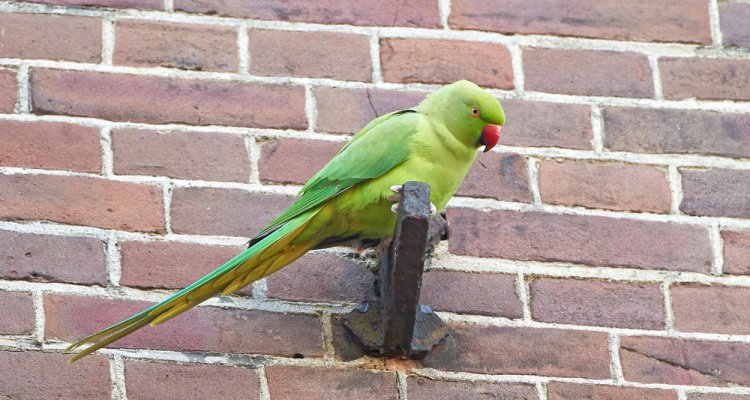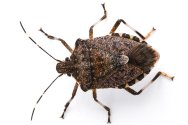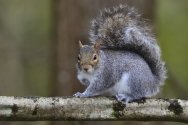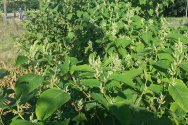
Dossier
Exotic species in the Netherlands
Exotic species, also known as alien or introduced species, are animals, plants, fungi or micro-organisms imported through human activity into an area where they do not originally occur, but where they proceed to thrive. Species which were introduced to the Netherlands before the year 1500, such as the rabbit, the pheasant and the mute swan, do not count and are considered indigenous.
Exotic species are sometimes introduced deliberately. An example is the multicoloured Asian ladybird, released in Europe 20 years ago to combat aphids. Pheasants and fallow deer were once released as hunting game. And every year hundreds of turtles and pond perch are released into Dutch watercourses when their owners have had enough of them.
But a lot of species get introduced by accident. Sometimes pets or ornamental animals escape from captivity, as did the Egyptian goose, the Pallas’s squirrel and the Italian crested newt. Marine creatures such as the Chinese mitten crab are brought in with ballast water from ships; the tiger mosquito hitches a ride on tropical plants. And since a canal was dug between the Rhine and Danube 20 years ago, fish species from the Danube watershed, such as the round goby and the money goby, have been able to reach our waters.
There is another category of newcomers that we do not count as exotic: species such as the great egret, whose habitat is shifting as a result of climate change. They are counted in the same category as the lynx, wildcat, wolf and perhaps the golden jackal: animals that settle here of their own accord.
Species monitoring through eDNA
With the help of environmental DNA (eDNA), researchers can demonstrate the presence of animal species, for example based on water samples.
Publications
-
Seizoensveranderingen in vis en epibenthos in de Waddenzee in de periode 2019-2023
IJmuiden: Centrum voor Visserijonderzoek (CVO) (CVO rapport 25.001) -
Duurzame teeltmaatregelen snijmais : Resultaten 4-jarige veldproef op zandgrond
Wageningen: Wageningen Livestock Research (Rapport / Wageningen Livestock Research 1546) -
Onderwaternatuur Waddenzee : literatuurstudie ter onderbouwing van het PAGW streefbeeld voor een veerkrachtige en robuuste Waddenzee
Den Helder: Wageningen Marine Research (Wageningen Marine Research rapport C098/24) -
Perspectief van plasmatechnologie als methaan- en ammoniakemissie reducerende maatregel in de melkveehouderij
Wageningen: Wageningen Livestock Research (Rapport / Wageningen Livestock Research 1553) -
Monitoring LED in de rozenteelt : monitoring van klimaat, kwaliteit en ervaringen in de praktijk (2022-2023)
Wageningen: Wageningen Plant Research (Rapport / Stichting Wageningen Research, Wageningen Plant Research, Businessunit Glastuinbouw WPR-1382) -
Modellering van risico-gebaseerde maatregelen tegen verspreiding van bestrijdingsplichtige dierziekten
Lelystad: Wageningen Bioveterinary Research (Wageningen Bioveterinary Research report 2501283) -
The Promise of Digitalisation : Case study: social impact of a digital app for community-based deforestation monitoring in the Peruvian Amazon
Wageningen: Wageningen Social & Economic Research (Report / Wageningen Social & Economic Research 2025-0303) -
Risk of introduction of Bonamia ostreae infected Ostrea edulis in the North Sea
Lelystad: Wageningen Bioveterinary Research (Wageningen Bioveterinary Research report 2504514) -
Geschiktheid van biogrondstoffen voor humane voeding in plaats van diervoeder : Welke aspecten zijn relevant om de geschiktheid van een biogrondstof voor humane voeding in plaats van diervoedertoepassingen in te schatten, en voor welke biogrondstoffen is dit relevant?
Wageningen: Wageningen Food & Biobased Research (Rapport / Wageningen Food & Biobased Research 6261) -
Aanjagen van nature-based solutions : Leerpunten en handelingsperspectieven uit zeven Nederlandse praktijkvoorbeelden
Wageningen: Wageningen University & Research (Rapport / Wageningen Social & Economic Research 2025-043)




